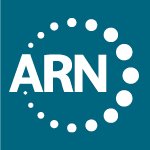RNJ Corner: The 7th edition of the APA publication manual
The Rehabilitation Nursing Journal (RNJ) contains educational content that focuses on contemporary rehabilitation nursing practice across the continuum of care and the lifespan. The journal is published every other month and provides opportunities for professional development, as well as a forum for the dissemination of information pertinent to practice, education, research, and administration. RNJ editors strive to provide a journal that disseminates timely information and new trends in practice each issue.
In this issue of RNJ Corner, RNJ Editorial Board Member, Pamala D. Larsen, PhD MS RN, provides information on which updates to keep at the top of your mind when writing your manuscript.
Why it's important to be updated
Last month I talked about the first few chapters of the APA manual, 7th edition, and how each chapter could improve your scholarly writing. This month, I'll discuss the nuts and bolts of APA format, and most importantly, what changed from the 6th to the 7th edition.
When the 6th edition was published in 2010, there was little help in referencing audiovisual media, TED talks (well, there weren't any to reference) websites, film, online media, a preprint article, a music recording, and so forth. APA barely mentioned those types of references. There was some information on electronic sources (p. 187-192) and some additional information on pages 209 and 210; however, that was the extent of the 'help'. As we enter the 3rd decade of the 2000s, the extent of electronic media and what I call, non-conforming references, is vast. The 7th edition has an answer for all APA reference questions you might have for both in-text citations and those in a reference list or bibliography.
Here is what you need to know about the 7th edition changes:
- Website URLs no longer need to be preceded with 'Retrieved from'
- Ebooks no longer require what type of ebook it is (e.g. PDF, Kindle)
- Journal DOIs are now displayed as doi.org URL instead of using the doi prefix. Example: Replace Rehabilitation Nursing, 45(1), doi: 10.1097/rnj.0000 with Rehabilitation Nursing, 45(2), https://doi.org.10.1097/rnj.0000
- A publisher's location is no longer required to be included with the publisher in referencing books or similar media. Example: Delete Philadelphia from this reference:Philadelphia: Lippincott Williams & Wilkins
- Up to 20 authors' names can now be included in a reference list before needing to use an ellipsis. Remember, you could only cite 6 authors prior to an ellipsis in the 6th edition.
- For all in-text citations, any reference with three or more authors can now be shortened to the first author and et al. from the very first time the reference is used in the text.
- In the 6th edition, Times New Roman font in 12 point (pt.) size was required. In the 7th edition, Calibri 11 pt, Arial 11 pt, Lucida Sans Unicode 10 pt, and Georgia 11 pt are now allowed. However, at RNJ, we will continue to require manuscripts in Times New Roman, 12 pt.
Enjoy the new changes in the 7th edition!
Reference: American Psychological Association. (2020). Publication manual of the American Psychological Association (7th ed.) https://doi.org/10.1037/0000165-000
Written by: Pamala D. Larsen, PhD MS RN, Rehabilitation Nursing Journal Editorial Board Member
Would you like to become a peer reviewer for RNJ?
If you'd like to become an RNJ reviewer, please fill out an application during ARN's call for volunteers. Though the call is not currently open, you can learn more about this and other volunteer opportunities.

Join Your Specialty Organization
Become an ARN member today to achieve your professional goals as a rehabilitation nurse
Learn More